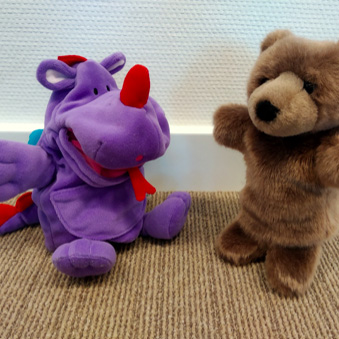
For my research, I measured impulsive behaviour in 3-year-old children. Briefly, impulsivity is the opposite of inhibitory control. There are several forms of inhibitory control, and although there is no official categorization of different forms of inhibitory control in young children, Anderson & Reidy [1] defined five categories. The categories are:
- Delay of gratification: the ability to resist direct temptation in order to receive a bigger reward after the delay.
- Impulse control: the ability to inhibit an instinctive response.
- Verbal inhibition: the ability to inhibit verbal responses.
- Motoric inhibition: the ability to learn response sets that conflict with an established behaviour.
- Go/No go: the ability to perform certain behaviour after being shown a certain stimulus but to inhibit that behaviour after being shown a different stimulus.
The Marshmallow Test is a famous example of an inhibitory control task (more specifically: delay of gratification). For this task, a marshmallow is placed in front of the child. The child is told that if s/he refrains from eating the marshmallow while the examiner is gone, s/he will receive two marshmallows when the examiner returns. Another example of an inhibitory control task (more specifically: Go/No go) is the Bear/Dragon task. For this test, the child has to obey the commands (e.g. ‘hands on your head’) of the bear hand puppet but must inhibit obeying the commands of the dragon hand puppet.
When comparing the Marshmallow task with the Bear/Dragon task, similarities and differences can be found. They are similar in the way that both tests require the child to inhibit their impulses. However, the Marshmallow task requires minimal working memory demand, while the Bear/Dragon task requires complex greater working memory demand [2]. The Bear/Dragon task is thus a complex inhibitory control task because children are instructed to not only inhibit a prepotent response but also to respond in a certain way to a salient, conflicting response option.
In my research, I used both behavioural tasks and parental reports (both mothers and fathers) to assess inhibitory control. However, results from the behavioural tests and the parental questionnaires correlate poorly with each other; a finding which is also often reported in other studies. While behavioural tests show objective observations of the child’s behaviour, these observations are mostly only carried out at one specific time point (e.g. during a home visit). As such, the child’s performance might be prone to noise, such as that the child slept poorly the past night. Reports of behaviour, on the other hand, reflect the behaviour of the child during daily life. However, these reports can be prone to socially desirable answering and parental perceptions of their child’s behaviour. By measuring inhibitory control with both behavioural tasks and parental reports, we obtain the most robust view of the child’s behaviour.
Overall, measuring inhibitory control behaviour in 3-year-olds can be challenging, but also a lot of fun! (Stay tuned for a blog on interesting anecdotes during my data collection).
